
Interstellar Mission
The Voyager 2 spacecraft, which has been in operation since 1977 and is the only spacecraft to have ever visited Uranus and Neptune, has made its way to interstellar space, where its twin spacecraft, Voyager 1, has resided since August 2012.


Mission Statistics
Launch Date
Aug. 20, 1977
About the mission
The Voyager 2 spacecraft, which has been in operation since 1977 and is the only spacecraft to have ever visited Uranus and Neptune, has made its way to interstellar space, where its twin spacecraft, Voyager 1, has resided since August 2012. During its travels through the outer solar system, Voyager 2 visited all four gas giant planets, and also discovered and photographed many of the planets' moons.
The spacecraft's flyby of Neptune in 1989 set it on a course below the elliptic plane that eventually took it to interstellar space on November 5, 2018. In 1998, engineers switched off the spacecraft's nonessential instruments to conserve power. Data from at least some of the six instruments still in operation should be received until at least 2025.
Instruments
- Imaging system
- Infrared interferometer spectrometer
- Ultraviolet spectrometer
- Triaxial fluxgate magnetometer
- Plasma spectrometer
- Low-energy charged particles detectors
- Cosmic Ray System (CRS)
- Photopolarimeter System (PPS)
- Plasma Wave System (PWS)
Mission Highlights
Nov. 5, 2018

Interactive 3D model of Voyager 2.View the full interactive experience at Eyes on the Solar System .

Voyager 1 and 2: The Interstellar Mission

An image of Neptune taken by the Voyager 2 spacecraft. Image credit: NASA
NASA has beautiful photos of every planet in our solar system. We even have images of faraway Neptune , as you can see in the photo above.
Neptune is much too distant for an astronaut to travel there with a camera. So, how do we have pictures from distant locations in our solar system? Our photographers were two spacecraft, called Voyager 1 and Voyager 2!

An artist’s rendering of one of the Voyager spacecraft. Image credit: NASA
The Voyager 1 and 2 spacecraft launched from Earth in 1977. Their mission was to explore Jupiter and Saturn —and beyond to the outer planets of our solar system. This was a big task. No human-made object had ever attempted a journey like that before.
The two spacecraft took tens of thousands of pictures of Jupiter and Saturn and their moons. The pictures from Voyager 1 and 2 allowed us to see lots of things for the first time. For example, they captured detailed photos of Jupiter's clouds and storms, and the structure of Saturn's rings .

Image of storms on Jupiter taken by the Voyager 1 spacecraft. Image credit: NASA
Voyager 1 and 2 also discovered active volcanoes on Jupiter's moon Io , and much more. Voyager 2 also took pictures of Uranus and Neptune. Together, the Voyager missions discovered 22 moons.
Since then, these spacecraft have continued to travel farther away from us. Voyager 1 and 2 are now so far away that they are in interstellar space —the region between the stars. No other spacecraft have ever flown this far away.
Where will Voyager go next?
Watch this video to find out what's beyond our solar system!
Both spacecraft are still sending information back to Earth. This data will help us learn about conditions in the distant solar system and interstellar space.
The Voyagers have enough fuel and power to operate until 2025 and beyond. Sometime after this they will not be able to communicate with Earth anymore. Unless something stops them, they will continue to travel on and on, passing other stars after many thousands of years.
Each Voyager spacecraft also carries a message. Both spacecraft carry a golden record with scenes and sounds from Earth. The records also contain music and greetings in different languages. So, if intelligent life ever find these spacecraft, they may learn something about Earth and us as well!

A photo of the golden record that was sent into space on both Voyager 1 and Voyager 2. Image credit: NASA/JPL-Caltech
More about our universe!

Where does interstellar space begin?

Searching for other planets like ours

Play Galactic Explorer!
If you liked this, you may like:
Inside NASA's 5-month fight to save the Voyager 1 mission in interstellar space

After working for five months to re-establish communication with the farthest-flung human-made object in existence, NASA announced this week that the Voyager 1 probe had finally phoned home.
For the engineers and scientists who work on NASA’s longest-operating mission in space, it was a moment of joy and intense relief.
“That Saturday morning, we all came in, we’re sitting around boxes of doughnuts and waiting for the data to come back from Voyager,” said Linda Spilker, the project scientist for the Voyager 1 mission at NASA’s Jet Propulsion Laboratory in Pasadena, California. “We knew exactly what time it was going to happen, and it got really quiet and everybody just sat there and they’re looking at the screen.”
When at long last the spacecraft returned the agency’s call, Spilker said the room erupted in celebration.
“There were cheers, people raising their hands,” she said. “And a sense of relief, too — that OK, after all this hard work and going from barely being able to have a signal coming from Voyager to being in communication again, that was a tremendous relief and a great feeling.”

The problem with Voyager 1 was first detected in November . At the time, NASA said it was still in contact with the spacecraft and could see that it was receiving signals from Earth. But what was being relayed back to mission controllers — including science data and information about the health of the probe and its various systems — was garbled and unreadable.
That kicked off a monthslong push to identify what had gone wrong and try to save the Voyager 1 mission.
Spilker said she and her colleagues stayed hopeful and optimistic, but the team faced enormous challenges. For one, engineers were trying to troubleshoot a spacecraft traveling in interstellar space , more than 15 billion miles away — the ultimate long-distance call.
“With Voyager 1, it takes 22 1/2 hours to get the signal up and 22 1/2 hours to get the signal back, so we’d get the commands ready, send them up, and then like two days later, you’d get the answer if it had worked or not,” Spilker said.

The team eventually determined that the issue stemmed from one of the spacecraft’s three onboard computers. Spilker said a hardware failure, perhaps as a result of age or because it was hit by radiation, likely messed up a small section of code in the memory of the computer. The glitch meant Voyager 1 was unable to send coherent updates about its health and science observations.
NASA engineers determined that they would not be able to repair the chip where the mangled software is stored. And the bad code was also too large for Voyager 1's computer to store both it and any newly uploaded instructions. Because the technology aboard Voyager 1 dates back to the 1960s and 1970s, the computer’s memory pales in comparison to any modern smartphone. Spilker said it’s roughly equivalent to the amount of memory in an electronic car key.
The team found a workaround, however: They could divide up the code into smaller parts and store them in different areas of the computer’s memory. Then, they could reprogram the section that needed fixing while ensuring that the entire system still worked cohesively.
That was a feat, because the longevity of the Voyager mission means there are no working test beds or simulators here on Earth to test the new bits of code before they are sent to the spacecraft.
“There were three different people looking through line by line of the patch of the code we were going to send up, looking for anything that they had missed,” Spilker said. “And so it was sort of an eyes-only check of the software that we sent up.”
The hard work paid off.
NASA reported the happy development Monday, writing in a post on X : “Sounding a little more like yourself, #Voyager1.” The spacecraft’s own social media account responded , saying, “Hi, it’s me.”
So far, the team has determined that Voyager 1 is healthy and operating normally. Spilker said the probe’s scientific instruments are on and appear to be working, but it will take some time for Voyager 1 to resume sending back science data.
Voyager 1 and its twin, the Voyager 2 probe, each launched in 1977 on missions to study the outer solar system. As it sped through the cosmos, Voyager 1 flew by Jupiter and Saturn, studying the planets’ moons up close and snapping images along the way.
Voyager 2, which is 12.6 billion miles away, had close encounters with Jupiter, Saturn, Uranus and Neptune and continues to operate as normal.
In 2012, Voyager 1 ventured beyond the solar system , becoming the first human-made object to enter interstellar space, or the space between stars. Voyager 2 followed suit in 2018.
Spilker, who first began working on the Voyager missions when she graduated college in 1977, said the missions could last into the 2030s. Eventually, though, the probes will run out of power or their components will simply be too old to continue operating.
Spilker said it will be tough to finally close out the missions someday, but Voyager 1 and 2 will live on as “our silent ambassadors.”
Both probes carry time capsules with them — messages on gold-plated copper disks that are collectively known as The Golden Record . The disks contain images and sounds that represent life on Earth and humanity’s culture, including snippets of music, animal sounds, laughter and recorded greetings in different languages. The idea is for the probes to carry the messages until they are possibly found by spacefarers in the distant future.
“Maybe in 40,000 years or so, they will be getting relatively close to another star,” Spilker said, “and they could be found at that point.”
Denise Chow is a reporter for NBC News Science focused on general science and climate change.

The remarkable twin Voyager spacecraft continue to explore the outer reaches of the solar system decades after they completed their surveys of the Outer Planets. Launched in 1977 (September 5 for Voyager 1 (V1) and August 20 for Voyager 2 (V2), whose trajectory took it past Jupiter after Voyager 1), the spacecraft pair made many fundamental discoveries as they flew past Jupiter (March 1979 for V1, July 1979 for V2) and Saturn (November 1980 for V1, August 1981 for V2). The path of Voyager 2 past Saturn was targeted so that it continued within the plane of the solar system, allowing it to become the first spacecraft to visit Uranus (January 1986) and Neptune (August 1989). Following the Neptune encounter, both spacecraft started a new phase of exploration under the intriguing title of the Voyager Interstellar Mission.
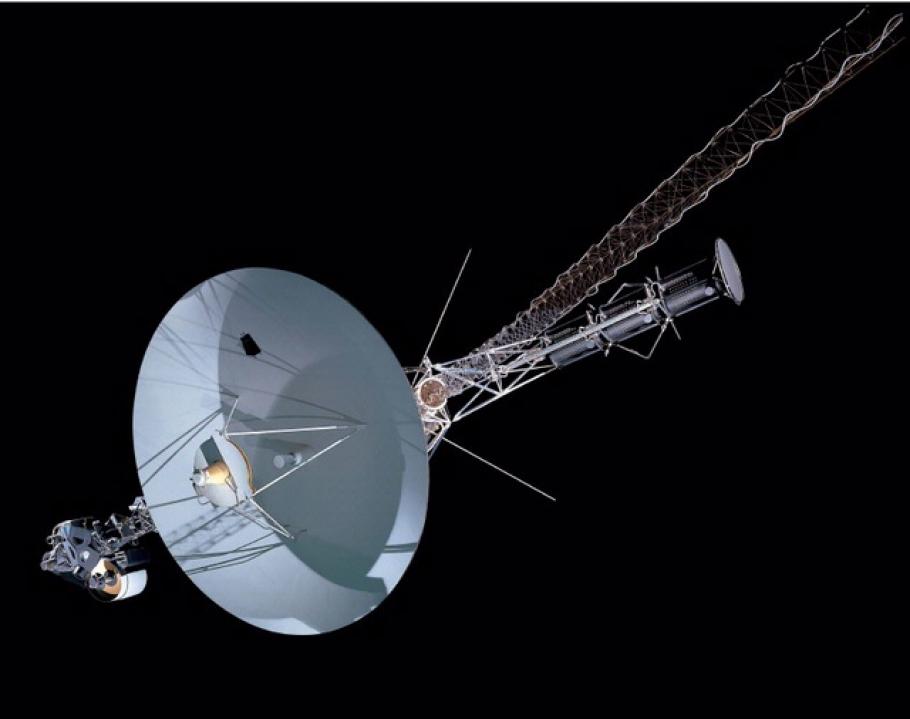
Five instruments continue to collect important measurements of magnetic fields, plasmas, and charged particles as both spacecraft explore different portions of the solar system beyond the orbits of the planets. Voyager 1 is now more than 118 astronomical units (one AU is equal to the average orbital distance of Earth from the Sun) distant from the sun, traveling at a speed (relative to the sun) of 17.1 kilometers per second (10.6 miles per second). Voyager 2 is now more than 96 AU from the sun, traveling at a speed of 15.5 kilometers per second (9.6 miles per second). Both spacecraft are moving considerably faster than Pioneers 10 and 11, two earlier spacecraft that became the first robotic visitors to fly past Jupiter and Saturn in the mid-70s.
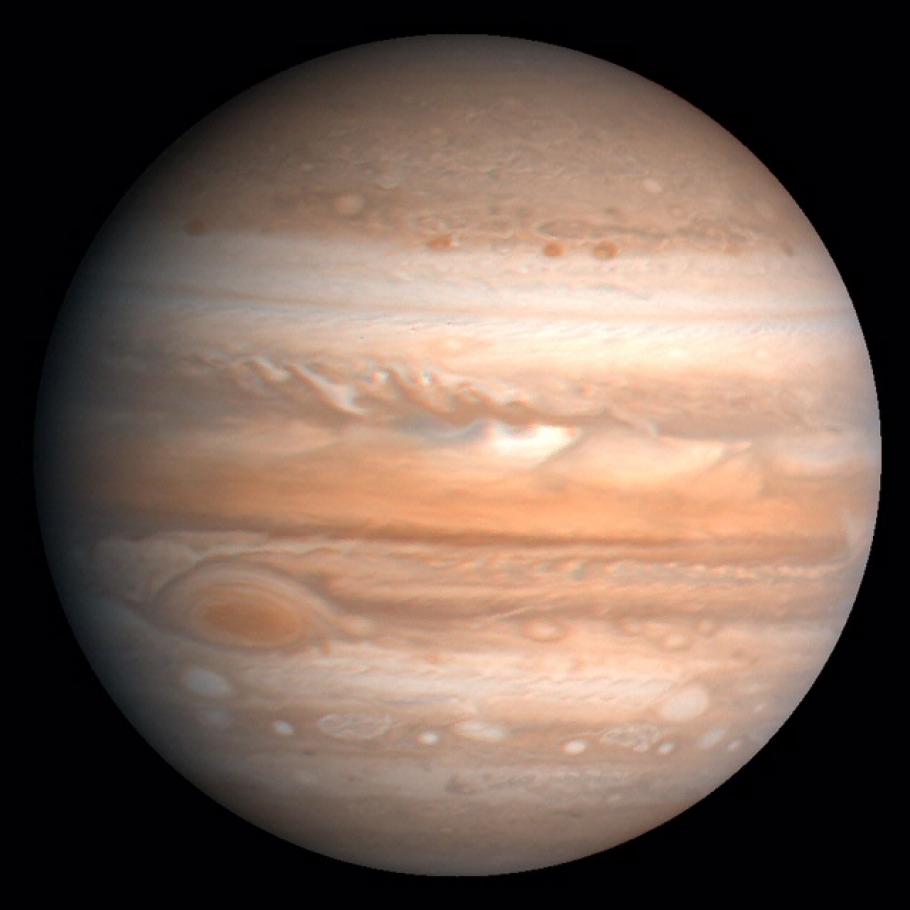
This processed color image of Jupiter was produced in 1990 by the U.S. Geological Survey from a Voyager image captured in 1979. The colors have been enhanced to bring out detail. Zones of light-colored, ascending clouds alternate with bands of dark, descending clouds. The clouds travel around the planet in alternating eastward and westward belts at speeds of up to 540 kilometers per hour. Tremendous storms as big as Earthly continents surge around the planet. The Great Red Spot (oval shape toward the lower-left) is an enormous anticyclonic storm that drifts along its belt, eventually circling the entire planet.
As seen in the night sky at Earth, Voyager 1 is within the confines of the constellation Ophiuchus, only slightly above the celestial equator; no telescope can see it, but radio contact is expected to be maintained for at least the next ten years. Voyager 2 is within the bounds of the constellation Telescopium (which somehow sounds quite appropriate) in the far southern night sky.
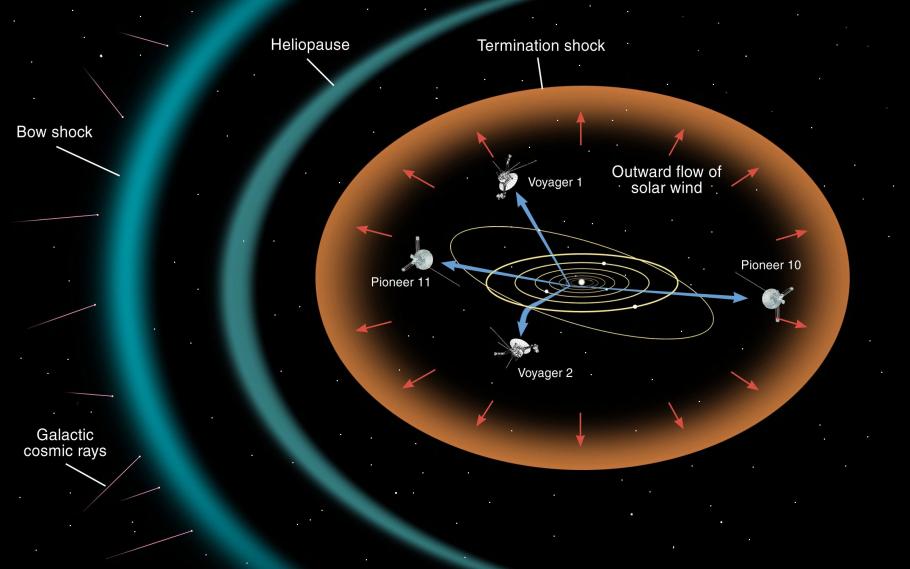
Both spacecraft have already passed something called the Termination Shock † (December 2004 for V1, August 2007 for V2), where the solar wind slows as it starts to interact with the particles and fields present between the stars. It is expected that both spacecraft will encounter the Heliopause, where the solar wind ceases as true interstellar space begins, from 10 to 20 years after crossing the Termination Shock. Theories exist for what should be present in interstellar space, but the Voyagers will become the first man-made objects to go beyond the influences of the Sun, hopefully returning the first measurements of what it is like out there. Each spacecraft is carrying a metal record with encoded sounds and sights from Earth, along with the needle needed to read the recordings, and simplified instructions for where the spacecraft came from, in case they are eventually discovered by intelligent extra-terrestrials.
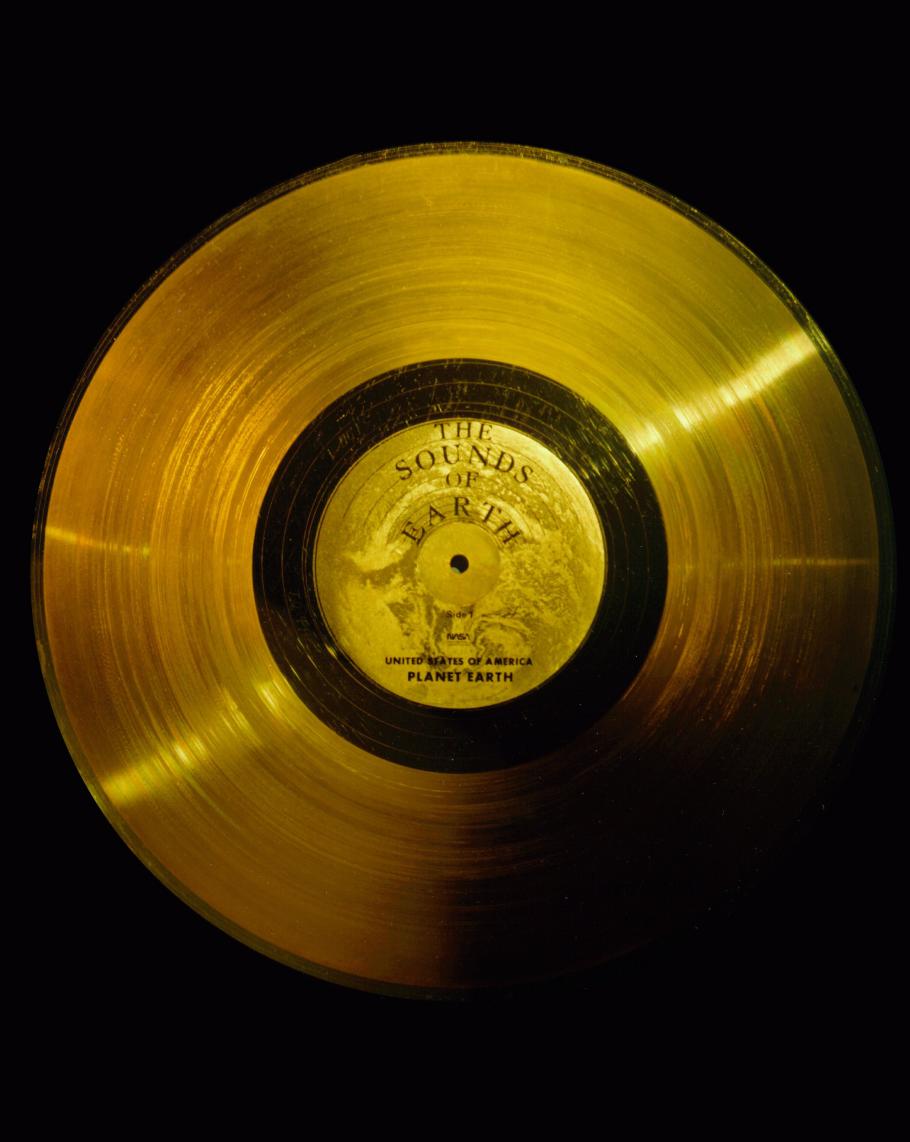
Keep track of the Voyager spacecraft on the official Voyager Interstellar Mission website or follow @NASAVoyager2 on Twitter. † The sun ejects a continuous stream of charged particles (electrons, protons, etc) that is collectively termed the solar wind. The particles are traveling extremely fast and are dense enough to form a very tenuous atmosphere; the heliosphere represents the volume of space where the effects of the solar wind dominate over those of particles in interstellar space. The solar wind particles are moving very much faster than the local speed of sound represented by their low volume density. When the particles begin to interact with interstellar particles and fields (the interaction can be either physically running into other particles or experiencing an electromagnetic force resulting from a charged particle moving within a magnetic field), then they start to slow down. The point at which they become subsonic (rather than their normal hypersonic speed) is the Termination Shock.
We rely on the generous support of donors, sponsors, members, and other benefactors to share the history and impact of aviation and spaceflight, educate the public, and inspire future generations. With your help, we can continue to preserve and safeguard the world’s most comprehensive collection of artifacts representing the great achievements of flight and space exploration.
- Get Involved
- Host an Event
Thank you. You have successfully signed up for our newsletter.
Error message, sorry, there was a problem. please ensure your details are valid and try again..
- Free Timed-Entry Passes Required
- Terms of Use
- Skip to main content
- Keyboard shortcuts for audio player
Well, hello, Voyager 1! The venerable spacecraft is once again making sense

Nell Greenfieldboyce

Members of the Voyager team celebrate at NASA's Jet Propulsion Laboratory after receiving data about the health and status of Voyager 1 for the first time in months. NASA/JPL-Caltech hide caption
Members of the Voyager team celebrate at NASA's Jet Propulsion Laboratory after receiving data about the health and status of Voyager 1 for the first time in months.
NASA says it is once again able to get meaningful information back from the Voyager 1 probe, after months of troubleshooting a glitch that had this venerable spacecraft sending home messages that made no sense.
The Voyager 1 and Voyager 2 probes launched in 1977 on a mission to study Jupiter and Saturn but continued onward through the outer reaches of the solar system. In 2012, Voyager 1 became the first spacecraft to enter interstellar space, the previously unexplored region between the stars. (Its twin, traveling in a different direction, followed suit six years later.)
Voyager 1 had been faithfully sending back readings about this mysterious new environment for years — until November, when its messages suddenly became incoherent .

NASA's Voyager 1 spacecraft is talking nonsense. Its friends on Earth are worried
It was a serious problem that had longtime Voyager scientists worried that this historic space mission wouldn't be able to recover. They'd hoped to be able to get precious readings from the spacecraft for at least a few more years, until its power ran out and its very last science instrument quit working.
For the last five months, a small team at NASA's Jet Propulsion Laboratory in California has been working to fix it. The team finally pinpointed the problem to a memory chip and figured out how to restore some essential software code.
"When the mission flight team heard back from the spacecraft on April 20, they saw that the modification worked: For the first time in five months, they have been able to check the health and status of the spacecraft," NASA stated in an update.
The usable data being returned so far concerns the workings of the spacecraft's engineering systems. In the coming weeks, the team will do more of this software repair work so that Voyager 1 will also be able to send science data, letting researchers once again see what the probe encounters as it journeys through interstellar space.

After a 12.3 billion-mile 'shout,' NASA regains full contact with Voyager 2
- interstellar mission
- International edition
- Australia edition
- Europe edition

Voyager 1 transmitting data again after Nasa remotely fixes 46-year-old probe
Engineers spent months working to repair link with Earth’s most distant spacecraft, says space agency
Earth’s most distant spacecraft, Voyager 1, has started communicating properly again with Nasa after engineers worked for months to remotely fix the 46-year-old probe.
Nasa’s Jet Propulsion Laboratory (JPL), which makes and operates the agency’s robotic spacecraft, said in December that the probe – more than 15bn miles (24bn kilometres) away – was sending gibberish code back to Earth.
In an update released on Monday , JPL announced the mission team had managed “after some inventive sleuthing” to receive usable data about the health and status of Voyager 1’s engineering systems. “The next step is to enable the spacecraft to begin returning science data again,” JPL said. Despite the fault, Voyager 1 had operated normally throughout, it added.
Launched in 1977, Voyager 1 was designed with the primary goal of conducting close-up studies of Jupiter and Saturn in a five-year mission. However, its journey continued and the spacecraft is now approaching a half-century in operation.
Voyager 1 crossed into interstellar space in August 2012, making it the first human-made object to venture out of the solar system. It is currently travelling at 37,800mph (60,821km/h).
Hi, it's me. - V1 https://t.co/jgGFBfxIOe — NASA Voyager (@NASAVoyager) April 22, 2024
The recent problem was related to one of the spacecraft’s three onboard computers, which are responsible for packaging the science and engineering data before it is sent to Earth. Unable to repair a broken chip, the JPL team decided to move the corrupted code elsewhere, a tricky job considering the old technology.
The computers on Voyager 1 and its sister probe, Voyager 2, have less than 70 kilobytes of memory in total – the equivalent of a low-resolution computer image. They use old-fashioned digital tape to record data.
The fix was transmitted from Earth on 18 April but it took two days to assess if it had been successful as a radio signal takes about 22 and a half hours to reach Voyager 1 and another 22 and a half hours for a response to come back to Earth. “When the mission flight team heard back from the spacecraft on 20 April, they saw that the modification worked,” JPL said.
Alongside its announcement, JPL posted a photo of members of the Voyager flight team cheering and clapping in a conference room after receiving usable data again, with laptops, notebooks and doughnuts on the table in front of them.
The Retired Canadian astronaut Chris Hadfield, who flew two space shuttle missions and acted as commander of the International Space Station, compared the JPL mission to long-distance maintenance on a vintage car.
“Imagine a computer chip fails in your 1977 vehicle. Now imagine it’s in interstellar space, 15bn miles away,” Hadfield wrote on X . “Nasa’s Voyager probe just got fixed by this team of brilliant software mechanics.
Voyager 1 and 2 have made numerous scientific discoveries , including taking detailed recordings of Saturn and revealing that Jupiter also has rings, as well as active volcanism on one of its moons, Io. The probes later discovered 23 new moons around the outer planets.
As their trajectory takes them so far from the sun, the Voyager probes are unable to use solar panels, instead converting the heat produced from the natural radioactive decay of plutonium into electricity to power the spacecraft’s systems.
Nasa hopes to continue to collect data from the two Voyager spacecraft for several more years but engineers expect the probes will be too far out of range to communicate in about a decade, depending on how much power they can generate. Voyager 2 is slightly behind its twin and is moving slightly slower.
In roughly 40,000 years, the probes will pass relatively close, in astronomical terms, to two stars. Voyager 1 will come within 1.7 light years of a star in the constellation Ursa Minor, while Voyager 2 will come within a similar distance of a star called Ross 248 in the constellation of Andromeda.

Cosmic cleaners: the scientists scouring English cathedral roofs for space dust

Russia acknowledges continuing air leak from its segment of space station

Uncontrolled European satellite falls to Earth after 30 years in orbit

Cosmonaut Oleg Kononenko sets world record for most time spent in space

‘Old smokers’: astronomers discover giant ancient stars in Milky Way

Nasa postpones plans to send humans to moon

What happened to the Peregrine lander and what does it mean for moon missions?

Peregrine 1 has ‘no chance’ of landing on moon due to fuel leak
Most viewed.

Voyager 1 & 2
- Launched on September 5, 1977
- Surveyed the Jupiter and Saturn systems
- First spacecraft to reach interstellar space
- RTGs still operating
- Currently exploring beyond our solar system
- Launched on August 20, 1977
- Only spacecraft to visit Jupiter, Saturn, Uranus and Neptune
- Currently exploring the edge of the solar system
Each powered by:
- 3 Multi-Hundred Watt (MHW) RTGs stacked in a series on a boom, producing about 158 W e each, at launch.
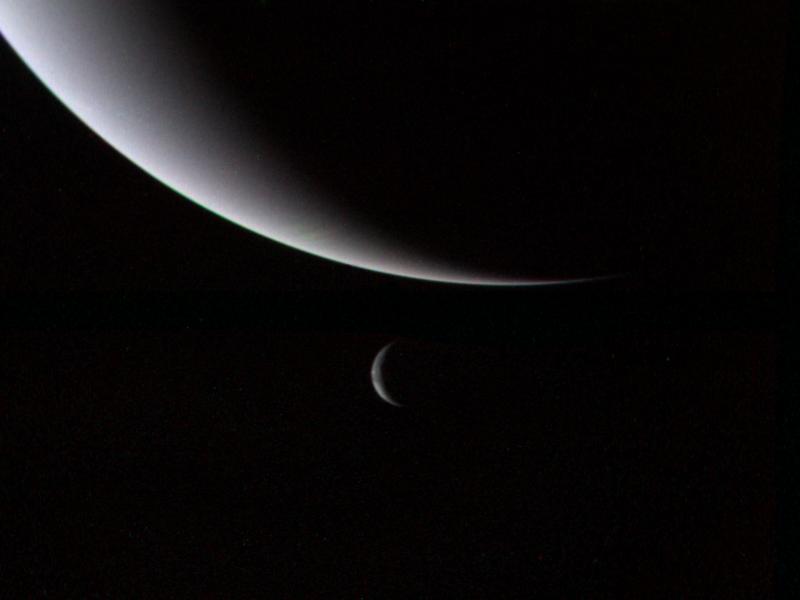
As the electrical power decreases, power loads on the spacecraft must be turned off in order to avoid having demand exceed supply. As loads are turned off, some spacecraft capabilities are eliminated.
Voyager Goals & Accomplishments
Voyager 1 and 2 were designed to take advantage of a rare planetary alignment to explore the outer solar system. Voyager 1 targeted Jupiter and Saturn before continuing on to chart the far edges of our solar system. Voyager 2 targeted Jupiter, Saturn, Uranus and Neptune before joining its sister probe on their interstellar mission.
Voyager proved to be one of the greatest missions of discovery in history. Among their many revelations about the solar system are:
- Rings around Jupiter
- Volcanoes on Jupiter's moon Io
- Moons of Saturn that shepherd its rings
- New moons around Uranus and Neptune
- Geysers of liquid nitrogen on Neptune's moon Triton
- Revealed and crossed the farthest boundary of our solar system
Voyager 2 is the only spacecraft to study all four of the solar system's giant planets at close range. The Voyagers are now exploring the outermost reaches of our sun's influence, where the solar wind mixes with the interstellar wind of our galaxy. Their long-lived power source has enabled these explorers to continue teaching us about our solar system for more than years after they left earth.
- Go to Voyager Homepage
- Go to Voyager Image Gallery
- Status: Where are the Voyagers?
Mission Elapsed Time
The most distant spacecraft in the solar system — Where are they now?
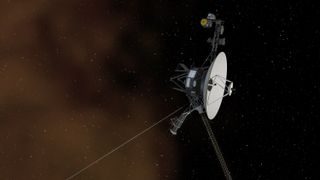
Humans have been flinging things into deep space for 50 years now, since the 1972 launch of Pioneer 10. We now have five spacecraft that have either reached the edges of our solar system or are fast approaching it: Pioneer 10, Pioneer 11, Voyager 1, Voyager 2 and New Horizons.
Most of these probes have defied their expected deaths and are still operating long beyond their original mission plans. These spacecraft were originally planned to explore our neighboring planets, but now they're blazing a trail out of the solar system , providing astronomers with unique vantage points in space — and they've been up to a lot in 2022.
Voyagers 1 and 2
The Voyager missions celebrated a very special anniversary this year: 45 years of operations . From close fly-bys of the outer planets to exploring humans' furthest reach in space, these two spacecraft have contributed immensely to astronomers' understanding of the solar system.
Related : Voyager: 15 incredible images of our solar system captured by the twin probes (gallery)
Their main project now is exploring where the sun 's influence ends, and other stars' influences begin. Voyager 1 crossed the heliopause, the boundary where the sun's flow of particles ceases to be the most important influence, in 2012 with Voyager 2 following close after, in 2018.
"Voyager 1 has now been in interstellar space for a decade…and it's still going, still going strong," Linda Spilker, Voyager project scientist and a planetary scientist at NASA's Jet Propulsion Laboratory (JPL) in California, told Space.com.
The mission team hit one major hiccup this year, when the spacecraft began sending home garbled information about its location. The engineers found the cause — the spacecraft was using a bad piece of computer hardware when it shouldn't have — and restored operations.
Get the Space.com Newsletter
Breaking space news, the latest updates on rocket launches, skywatching events and more!
These kinds of incidents are to be expected with an aging spacecraft, though. The team is also actively managing the power supply onboard each spacecraft, which is dwindling each year as the probes' radioactive generators grow increasingly inefficient. This year, mission personnel turned off heaters keeping a number of scientific instruments on board warm in the harsh, cold environment of space — and, much to everyone's surprise, those instruments are still working perfectly well.
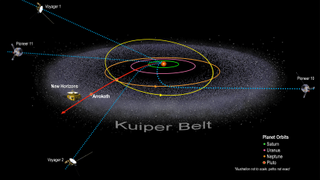
The cameras may have been turned off decades ago, but the spacecrafts' other instruments are collecting data on the plasma and magnetic fields from the sun at a great distance away from the star itself. Because particles of the solar wind — the constant stream of charged particles flowing off the sun — take time to travel such a long way, distant observations allow scientists to see how changes from the sun propagate throughout our cosmic neighborhood.
The edges of the solar system have been full of surprises, too. It would make sense that plasma from the sun becomes more sparse and spread out as you move away from the center of the solar system, but in fact, the Voyagers have encountered much denser plasma after crossing the heliopause. Astronomers are still puzzled about that one.
"It's just so amazing that even after all this time we continue to see the sun's influence in interstellar space," Spilker said. "I'm looking forward to Voyager continuing to operate, perhaps reaching the 50th anniversary."
Pioneers 10 and 11
The Pioneer spacecraft hold a special place in space history because of their role as, you guessed it, pioneers. Unfortunately, these milestone 50-year-old spacecraft are non-functional — Pioneer 10 lost communications back in 2003, and Pioneer 11 has been silent since its last contact in 1995.
But both these spacecraft are marks of humanity's presence in the solar system, and they are still continuing on their journeys, even if we're not sending them commands or firing their rockets anymore. Once a spacecraft is set on a trajectory out of the solar system, according to the laws of physics, it won't stop unless something changes its course.
New Horizons
New Horizons is by far the youngest sibling of these groundbreaking missions, having just launched in 2006 . After completing its famous flyby of dwarf planet Pluto in 2015 , this probe has been zooming out of the solar system at record speed, set to reach the heliopause around 2040.
Not only has it completed its primary mission, but it successfully completed a flyby of the smaller Kuiper Belt object, Arrokoth , in 2019 as its first mission extension. Earlier this year, the spacecraft was put into hibernation mode because an extended mission hadn't yet been approved. But now, the team is excitedly moving into New Horizons' 2nd Kuiper Belt Extended Mission, or KEM2 for short. KEM2 began on Oct. 1 , although the spacecraft will hibernate until March 1, 2023.
In the meantime, the mission team is preparing for exciting new observations. With cutting-edge instruments — far more advanced than what the Voyagers carried in the 1970s — the team is prepared to use New Horizons as a powerhouse observatory in the distant solar system, providing a viewpoint we can't achieve here on Earth .
Bonnie Burrati, planetary scientist at JPL and member of the New Horizons team, is particularly looking forward to new views of Kuiper Belt objects (KBOs), the chunks of ice and rock beyond Neptune . New Horizons' unique position in the outer solar system provides new angles of looking at these KBOs, she said. Different views can tell astronomers about how rough the objects' surfaces are, among other things, based on how light scatters and creates shadows on them.
Another planetary scientist on the team from Southwest Research Institute in Colorado, Leslie Young, wants to use the spacecraft for a new look at something closer to home: the ice giants, Uranus and Neptune. New Horizons’ unique viewpoint provides scientists with information about how light scatters through the planets’ atmospheres—information we can’t get from here on Earth, since we can’t see Uranus and Neptune from that angle. Planetary scientists are eager for more information about these planets, especially as NASA begins planning for a new mission to visit Uranus.
— The icy 'space snowman' Arrokoth in deep space just got names for its best features — Pale Blue Dot at 30: Voyager 1's iconic photo of Earth from space reveals our place in the universe — Destination Pluto: NASA's New Horizons mission in pictures
When the spacecraft wakes from hibernation, it will be past the so-called "Kuiper cliff," where scientists currently think there are far fewer large KBOs. "When we look at other star systems, we see debris disks extending to much larger distances from their host stars," Bryan Holler, an astronomer at Baltimore's Space Telescope Science Institute, told Space.com. "If ET were to look at our solar system, would they see the same thing?"
This next extended mission will even venture beyond New Horizons' original domain of planetary science. Now, the spacecraft will provide better-than-ever measurements of the background of light and cosmic rays in space, trace the distributions of dust throughout our solar system, and obtain crucial information on the sun's influence, complimentary to the Voyagers. Since the three functional far out spacecraft are heading in separate directions, they allow astronomers to map out irregularities in the solar system's structure.
Luckily for New Horizons, signs indicate that the spacecraft will have enough power to last through the 2040s and possibly beyond — each year, moving 300 million miles (480 million kilometers) farther into uncharted territory.
Follow the author at @ briles_34 on Twitter. Follow us on Twitter @ Spacedotcom and on Facebook .
Join our Space Forums to keep talking space on the latest missions, night sky and more! And if you have a news tip, correction or comment, let us know at: [email protected].

Briley Lewis (she/her) is a freelance science writer and Ph.D. Candidate/NSF Fellow at the University of California, Los Angeles studying Astronomy & Astrophysics. Follow her on Twitter @briles_34 or visit her website www.briley-lewis.com .
China launches Chang'e 6 sample-return mission to moon's far side (video)
A Switzerland-size hole opened in Antarctica's sea ice in 2016-17. Now we know why
NASA astronaut and director Ellen Ochoa awarded Presidential Medal of Freedom
- bolide I wonder if the JWST could see any of these satellites, if it aimed in their direction. Reply
bolide said: I wonder if the JWST could see any of these satellites, if it aimed in their direction.
- View All 2 Comments
Most Popular
- 2 Happy National Astronaut Day 2024! Holiday's founder talks importance of honoring America's spaceflyers (exclusive)
- 3 After an 'emotional rollercoaster,' NASA astronauts are ready to fly on Boeing Starliner
- 4 Boeing Starliner 1st astronaut flight: Live updates
- 5 X-ray spacecraft reveals odd 'Cloverleaf' radio circle in new light (image)

Suggested Searches
- Climate Change
- Expedition 64
- Mars perseverance
- SpaceX Crew-2
- International Space Station
- View All Topics A-Z
Humans in Space
Earth & climate, the solar system, the universe, aeronautics, learning resources, news & events.

NASA’s Commercial Partners Deliver Cargo, Crew for Station Science

Hi-C Rocket Experiment Achieves Never-Before-Seen Look at Solar Flares

NASA Is Helping Protect Tigers, Jaguars, and Elephants. Here’s How.
- Search All NASA Missions
- A to Z List of Missions
- Upcoming Launches and Landings
- Spaceships and Rockets
- Communicating with Missions
- James Webb Space Telescope
- Hubble Space Telescope
- Why Go to Space
- Astronauts Home
- Commercial Space
- Destinations
- Living in Space
- Explore Earth Science
- Earth, Our Planet
- Earth Science in Action
- Earth Multimedia
- Earth Science Researchers
- Pluto & Dwarf Planets
- Asteroids, Comets & Meteors
- The Kuiper Belt
- The Oort Cloud
- Skywatching
- The Search for Life in the Universe
- Black Holes
- The Big Bang
- Dark Energy & Dark Matter
- Earth Science
- Planetary Science
- Astrophysics & Space Science
- The Sun & Heliophysics
- Biological & Physical Sciences
- Lunar Science
- Citizen Science
- Astromaterials
- Aeronautics Research
- Human Space Travel Research
- Science in the Air
- NASA Aircraft
- Flight Innovation
- Supersonic Flight
- Air Traffic Solutions
- Green Aviation Tech
- Drones & You
- Technology Transfer & Spinoffs
- Space Travel Technology
- Technology Living in Space
- Manufacturing and Materials
- Science Instruments
- For Kids and Students
- For Educators
- For Colleges and Universities
- For Professionals
- Science for Everyone
- Requests for Exhibits, Artifacts, or Speakers
- STEM Engagement at NASA
- NASA's Impacts
- Centers and Facilities
- Directorates
- Organizations
- People of NASA
- Internships
- Our History
- Doing Business with NASA
- Get Involved
- Aeronáutica
- Ciencias Terrestres
- Sistema Solar
- All NASA News
- Video Series on NASA+
- Newsletters
- Social Media
- Media Resources
- Upcoming Launches & Landings
- Virtual Events
- Sounds and Ringtones
- Interactives
- STEM Multimedia

C.26 Rapid Mission Design Studies for Mars Sample Return Correction and Other Documents Posted
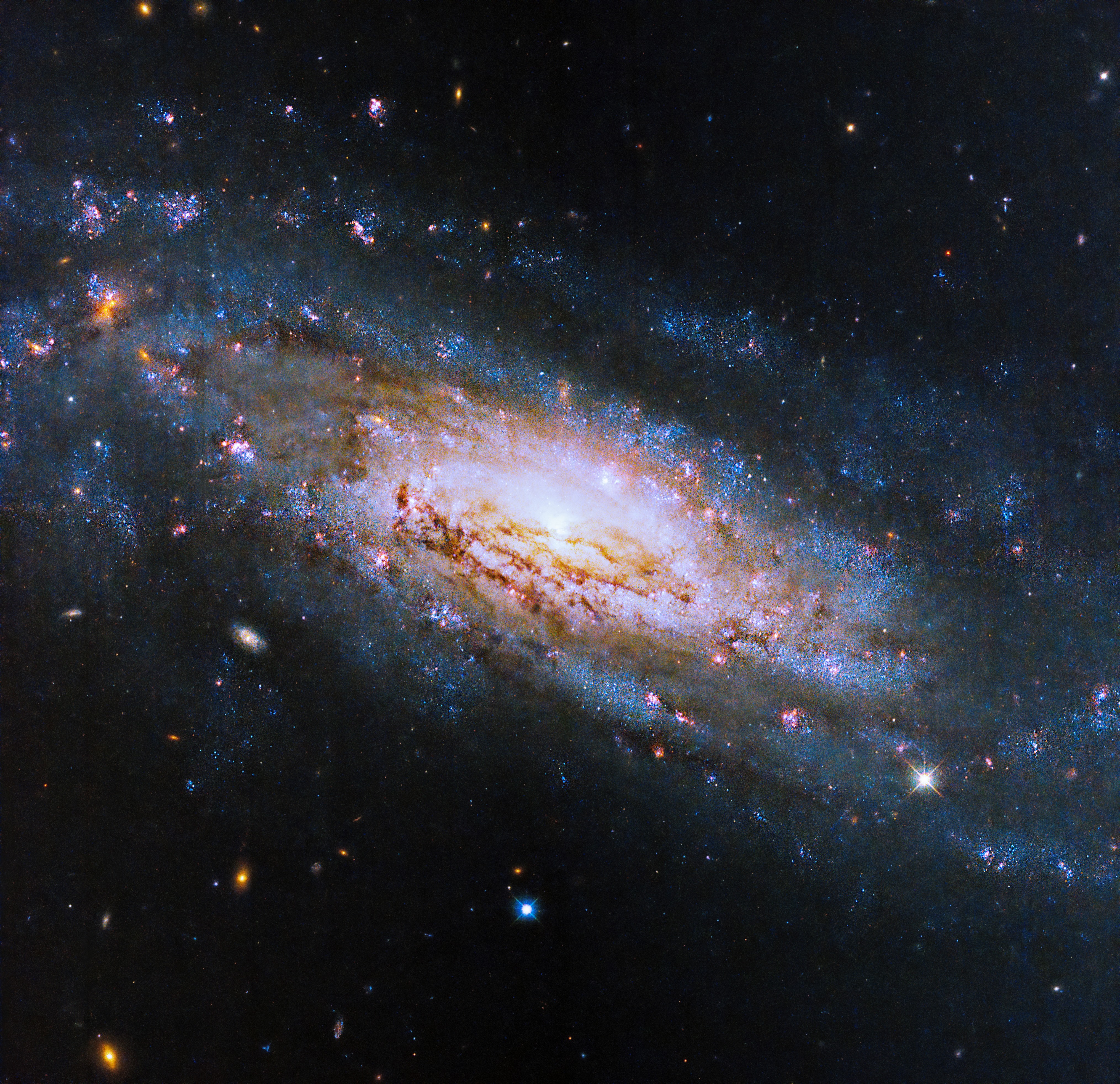
Hubble Views a Galaxy with a Voracious Black Hole

Hubble Hunts Visible Light Sources of X-Rays

NASA Mission Strengthens 40-Year Friendship

NASA Selects Commercial Service Studies to Enable Mars Robotic Science

Two Small NASA Satellites Will Measure Soil Moisture, Volcanic Gases

NASA-Led Study Provides New Global Accounting of Earth’s Rivers

NASA Selects Students for Europa Clipper Intern Program

Orbits and Kepler’s Laws

New NASA Black Hole Visualization Takes Viewers Beyond the Brink

Black Hole Week

The Big Event, 2024

ARMD Solicitations

NASA’s Commitment to Safety Starts with its Culture

NASA Uses Small Engine to Enhance Sustainable Jet Research


Tech Today: NASA’s Ion Thruster Knowhow Keeps Satellites Flying

Big Science Drives Wallops’ Upgrades for NASA Suborbital Missions

NASA Community College Aerospace Scholars

NASA Grant Brings Students at Underserved Institutions to the Stars

Asian-American and Native Hawaiian Pacific Islander Heritage Month

Diez maneras en que los estudiantes pueden prepararse para ser astronautas

Astronauta de la NASA Marcos Berríos

Resultados científicos revolucionarios en la estación espacial de 2023
Voyager 1 & 2.

The primary mission of Voyager 1 and 2 was the exploration of Jupiter and Saturn; after completing this objective, Voyager 1 and 2’s missions were extended. The Voyager Interstellar Mission will explore the limits of the Sun’s influence at the edge of the solar system and beyond. Penetration of the heliopause boundary between the solar wind and the interstellar medium will allow measurements to be made of the interstellar fields, particles, and waves unaffected by the solar wind.
Launch : August/September 1977 Operating Network : Deep Space Network
› Deep Space Network (DSN) › Voyager 1 & 2 › Universe Missions Supported by SCaN

Voyager 1 and Voyager 2
Where are they now.
Both Voyager 1 and Voyager 2 have reached "interstellar space" and each continue their unique journey deeper into the cosmos. In NASA's Eyes on the Solar System app, you can see the actual spacecraft trajectories of the Voyagers updated every five minutes.
Mission Status
Instrument status.
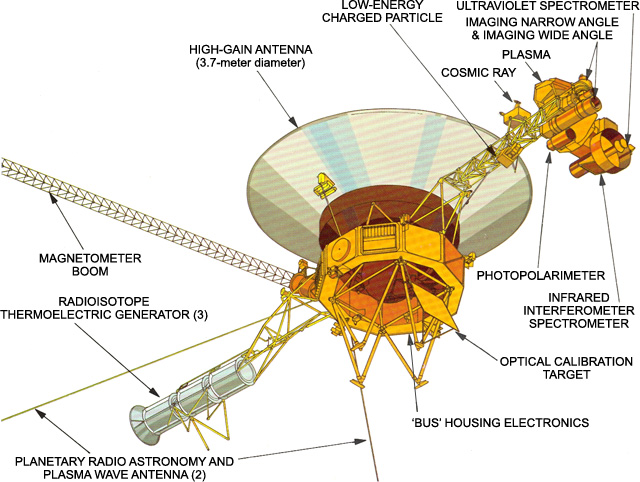
Voyager 1 Present Position
Voyager 2 present position, voyager's grand tour: 1977 - today.
- Election 2024
- Entertainment
- Newsletters
- Photography
- Personal Finance
- AP Investigations
- AP Buyline Personal Finance
- AP Buyline Shopping
- Press Releases
- Israel-Hamas War
- Russia-Ukraine War
- Global elections
- Asia Pacific
- Latin America
- Middle East
- Election Results
- Delegate Tracker
- AP & Elections
- Auto Racing
- 2024 Paris Olympic Games
- Movie reviews
- Book reviews
- Personal finance
- Financial Markets
- Business Highlights
- Financial wellness
- Artificial Intelligence
- Social Media
NASA hears from Voyager 1, the most distant spacecraft from Earth, after months of quiet
This illustration provided by NASA depicts Voyager 1. The most distant spacecraft from Earth stopped sending back understandable data in November 2023. Flight controllers traced the blank communication to a bad computer chip and rearranged the spacecraft’s coding to work around the trouble. In mid-April 2024, NASA’s Jet Propulsion Laboratory declared success after receiving good engineering updates. The team is still working to restore transmission of the science data. (NASA via AP)
- Copy Link copied
CAPE CANAVERAL, Fla. (AP) — NASA has finally heard back from Voyager 1 again in a way that makes sense.
The most distant spacecraft from Earth stopped sending back understandable data last November. Flight controllers traced the blank communication to a bad computer chip and rearranged the spacecraft’s coding to work around the trouble.
NASA’s Jet Propulsion Laboratory in Southern California declared success after receiving good engineering updates late last week. The team is still working to restore transmission of the science data.
It takes 22 1/2 hours to send a signal to Voyager 1, more than 15 billion miles (24 billion kilometers) away in interstellar space. The signal travel time is double that for a round trip.
Contact was never lost, rather it was like making a phone call where you can’t hear the person on the other end, a JPL spokeswoman said Tuesday.
Launched in 1977 to study Jupiter and Saturn, Voyager 1 has been exploring interstellar space — the space between star systems — since 2012. Its twin, Voyager 2, is 12.6 billion miles (20 billion kilometers) away and still working fine.
The Associated Press Health and Science Department receives support from the Howard Hughes Medical Institute’s Science and Educational Media Group. The AP is solely responsible for all content.
- Work & Careers
- Life & Arts
Become an FT subscriber
Try unlimited access Only $1 for 4 weeks
Then $75 per month. Complete digital access to quality FT journalism on any device. Cancel anytime during your trial.
- Global news & analysis
- Expert opinion
- Special features
- FirstFT newsletter
- Videos & Podcasts
- Android & iOS app
- FT Edit app
- 10 gift articles per month
Explore more offers.
Standard digital.
- FT Digital Edition
Premium Digital
Print + premium digital, weekend print + standard digital, weekend print + premium digital.
Today's FT newspaper for easy reading on any device. This does not include ft.com or FT App access.
- Global news & analysis
- Exclusive FT analysis
- FT App on Android & iOS
- FirstFT: the day's biggest stories
- 20+ curated newsletters
- Follow topics & set alerts with myFT
- FT Videos & Podcasts
- 20 monthly gift articles to share
- Lex: FT's flagship investment column
- 15+ Premium newsletters by leading experts
- FT Digital Edition: our digitised print edition
- Weekday Print Edition
- Videos & Podcasts
- Premium newsletters
- 10 additional gift articles per month
- FT Weekend Print delivery
- Everything in Standard Digital
- Everything in Premium Digital
Essential digital access to quality FT journalism on any device. Pay a year upfront and save 20%.
- 10 monthly gift articles to share
- Everything in Print
Complete digital access to quality FT journalism with expert analysis from industry leaders. Pay a year upfront and save 20%.
Terms & Conditions apply
Explore our full range of subscriptions.
Why the ft.
See why over a million readers pay to read the Financial Times.
International Edition
share this!
April 27, 2024
This article has been reviewed according to Science X's editorial process and policies . Editors have highlighted the following attributes while ensuring the content's credibility:
fact-checked
reputable news agency
NASA hears from Voyager 1, the most distant spacecraft from Earth, after months of quiet
by Marcia Dunn
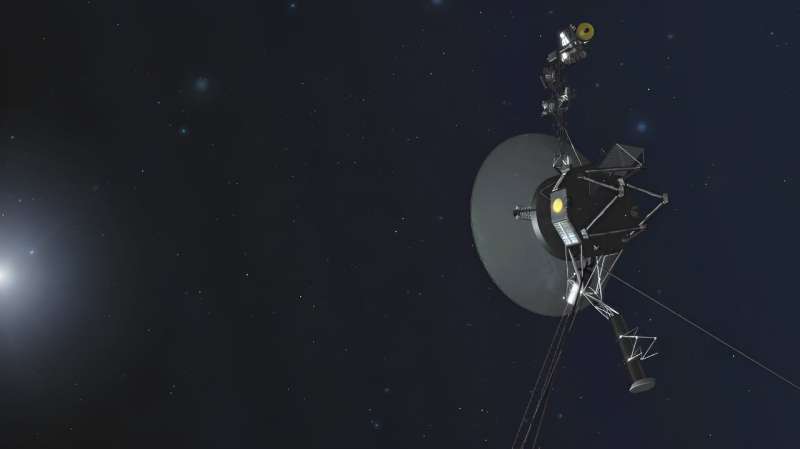
NASA has finally heard back from Voyager 1 again in a way that makes sense.
The most distant spacecraft from Earth stopped sending back understandable data last November. Flight controllers traced the blank communication to a bad computer chip and rearranged the spacecraft's coding to work around the trouble.
NASA's Jet Propulsion Laboratory in Southern California declared success after receiving good engineering updates late last week. The team is still working to restore transmission of the science data.
It takes 22 1/2 hours to send a signal to Voyager 1, more than 15 billion miles (24 billion kilometers) away in interstellar space . The signal travel time is double that for a round trip.
Contact was never lost, rather it was like making a phone call where you can't hear the person on the other end, a JPL spokeswoman said Tuesday.
Launched in 1977 to study Jupiter and Saturn, Voyager 1 has been exploring interstellar space — the space between star systems — since 2012. Its twin, Voyager 2, is 12.6 billion miles (20 billion kilometers) away and still working fine.
© 2024 The Associated Press. All rights reserved. This material may not be published, broadcast, rewritten or redistributed without permission.
Explore further
Feedback to editors

Earthquakes are moving northeast in Midland Basin of Texas, scientists find
8 hours ago

New black hole visualization takes viewers beyond the brink

Research team develops fast-track process for genetic improvement of plant traits

Boeing's first Starliner mission with humans set for historic Space Coast launch tonight

Researchers develop a nanoparticle that can penetrate the blood-brain barrier
9 hours ago

Geologists, biologists unearth the atomic fingerprints of cancer

Listening to giants: The search for the elusive Antarctic blue whale
10 hours ago

Bee body mass, pathogens and local climate influence heat tolerance

Astronomers observe elusive stellar light surrounding ancient quasars
11 hours ago

Engineers solve 'catalysis vs corrosion' mystery in electrochemical ozone production
Relevant physicsforums posts, our beautiful universe - photos and videos, why on earth do we not see older stars close to us.
14 hours ago
Documenting the setup of my new telescope
May 6, 2024
Retro/prograde flyby galaxies and their bar formation
May 5, 2024
Asteroid 2024 BX1 entered Earth's atmosphere over Germany 21 Jan 2024
May 4, 2024
Solar Activity and Space Weather Update thread
May 3, 2024
More from Astronomy and Astrophysics
Related Stories

NASA's Voyager 1 resumes sending engineering updates to Earth
Apr 22, 2024

NASA hears signal from Voyager 2 spacecraft after mistakenly cutting contact
Aug 1, 2023

NASA listens for Voyager 2 spacecraft after wrong command cuts contact
Jul 31, 2023

Engineers working to resolve issue with Voyager 1 computer
Dec 13, 2023
As Voyager 1's mission draws to a close, one planetary scientist reflects on its legacy
Mar 18, 2024

NASA back in touch with Voyager 2 after 'interstellar shout'
Aug 4, 2023
Recommended for you

Study investigates a nearby M-dwarf binary system

Scientists' research answers big question about our system's largest planet
12 hours ago

Compared to billions of years ago, Venus has almost no water: New study may reveal why
13 hours ago

TOI-837 b is a young Saturn-sized exoplanet with a massive core, observations find
May 2, 2024

Webb telescope probably didn't find life on an exoplanet—yet

New findings point to an Earth-like environment on ancient Mars
May 1, 2024
Let us know if there is a problem with our content
Use this form if you have come across a typo, inaccuracy or would like to send an edit request for the content on this page. For general inquiries, please use our contact form . For general feedback, use the public comments section below (please adhere to guidelines ).
Please select the most appropriate category to facilitate processing of your request
Thank you for taking time to provide your feedback to the editors.
Your feedback is important to us. However, we do not guarantee individual replies due to the high volume of messages.
E-mail the story
Your email address is used only to let the recipient know who sent the email. Neither your address nor the recipient's address will be used for any other purpose. The information you enter will appear in your e-mail message and is not retained by Phys.org in any form.
Newsletter sign up
Get weekly and/or daily updates delivered to your inbox. You can unsubscribe at any time and we'll never share your details to third parties.
More information Privacy policy
Donate and enjoy an ad-free experience
We keep our content available to everyone. Consider supporting Science X's mission by getting a premium account.
E-mail newsletter

- The Contents
- The Making of
- Where Are They Now
- Frequently Asked Questions
- Q & A with Ed Stone
golden record
Where are they now.
- frequently asked questions
- Q&A with Ed Stone
Galleries of Images Voyager Took
The Voyager 1 and 2 spacecraft explored Jupiter, Saturn, Uranus and Neptune before starting their journey toward interstellar space. Here you'll find some of those iconic images, including "The Pale Blue Dot" - famously described by Carl Sagan - and what are still the only up-close images of Uranus and Neptune.
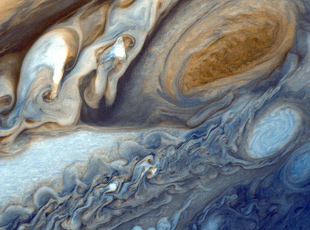
Photography of Jupiter began in January 1979, when images of the brightly banded planet already exceeded the best taken from Earth. Voyager 1 completed its Jupiter encounter in early April, after taking almost 19,000 pictures and many other scientific measurements. Voyager 2 picked up the baton in late April and its encounter continued into August. They took more than 33,000 pictures of Jupiter and its five major satellites.
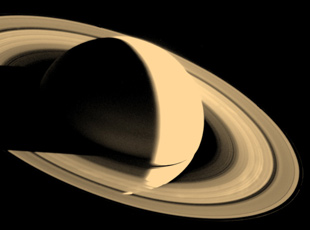
The Voyager 1 and 2 Saturn encounters occurred nine months apart, in November 1980 and August 1981. Voyager 1 is leaving the solar system. Voyager 2 completed its encounter with Uranus in January 1986 and with Neptune in August 1989, and is now also en route out of the solar system.
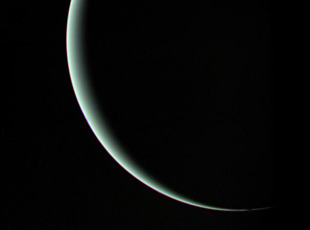
NASA's Voyager 2 spacecraft flew closely past distant Uranus, the seventh planet from the Sun, in January. At its closet, the spacecraft came within 81,800 kilometers (50,600 miles) of Uranus's cloudtops on Jan. 24, 1986. Voyager 2 radioed thousands of images and voluminous amounts of other scientific data on the planet, its moons, rings, atmosphere, interior and the magnetic environment surrounding Uranus.
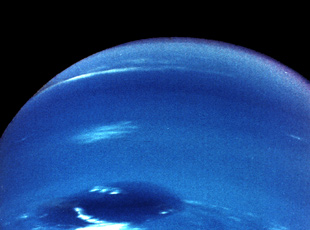
In the summer of 1989, NASA's Voyager 2 became the first spacecraft to observe the planet Neptune, its final planetary target. Passing about 4,950 kilometers (3,000 miles) above Neptune's north pole, Voyager 2 made its closest approach to any planet since leaving Earth 12 years ago. Five hours later, Voyager 2 passed about 40,000 kilometers (25,000 miles) from Neptune's largest moon, Triton, the last solid body the spacecraft will have an opportunity to study.
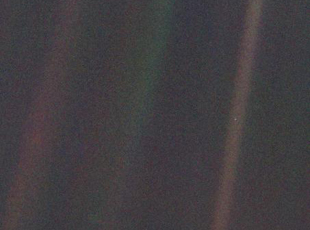
This narrow-angle color image of the Earth, dubbed 'Pale Blue Dot', is a part of the first ever 'portrait' of the solar system taken by Voyager 1. The spacecraft acquired a total of 60 frames for a mosaic of the solar system from a distance of more than 4 billion miles from Earth and about 32 degrees above the ecliptic. From Voyager's great distance Earth is a mere point of light, less than the size of a picture element even in the narrow-angle camera. Earth was a crescent only 0.12 pixel in size. Coincidentally, Earth lies right in the center of one of the scattered light rays resulting from taking the image so close to the sun. This blown-up image of the Earth was taken through three color filters -- violet, blue and green -- and recombined to produce the color image. The background features in the image are artifacts resulting from the magnification.

IMAGES
VIDEO
COMMENTS
Learn about the current status and location of Voyager 1 and Voyager 2, the two spacecraft that have reached interstellar space and continue their journey through the Universe. See the real-time data, interactive map, and tracking schedule of the Voyagers.
Learn about the twin Voyager 1 and 2 spacecraft that are exploring the outer limits of the solar system and interstellar space. Find out their launch dates, scientific discoveries, and current status.
Voyager 1 · Earth · Jupiter · Saturn · Sun. The Voyager 1 probe was launched on September 5, 1977, from Launch Complex 41 at the Cape Canaveral Air Force Station, aboard a Titan IIIE launch vehicle. The Voyager 2 probe had been launched two weeks earlier, on August 20, 1977.
Learn about the twin Voyager 1 and 2 spacecraft that explored all the giant planets of our outer solar system and entered interstellar space. Find out their status, science, timeline, spacecraft and more.
A poster of the planets and moons visited during the Voyager program. The Voyager program is an American scientific program that employs two interstellar probes, Voyager 1 and Voyager 2.They were launched in 1977 to take advantage of a favorable alignment of the two gas giants Jupiter and Saturn and the ice giants, Uranus and Neptune, to fly near them while collecting data for transmission ...
Learn about the Voyager 1 and 2 spacecraft, the only ones to reach the edge of interstellar space. Explore their discoveries, images, and challenges in this improved NASA website.
Learn about the Voyager spacecraft, their missions, and their current locations and conditions. Find out how NASA is working to extend their lifetimes and explore the cosmic rays.
Voyager 1 is the most distant human-made object in existence, having reached interstellar space in 2012. It explored Jupiter and Saturn, discovered new moons and carried a Golden Record of Earth's story.
The probe and its twin, Voyager 2, are the only spacecraft to ever fly in interstellar space (the space between stars). Voyager 1 stopped sending readable science and engineering data back to Earth on Nov. 14, 2023, even though mission controllers could tell the spacecraft was still receiving their commands and otherwise operating normally.
Voyager 2 is the only spacecraft to have ever visited Uranus and Neptune, and it reached interstellar space in 2018. Learn about its mission, instruments, discoveries, and status on the official NASA website.
Learn how Voyager 1 and 2 explored Jupiter, Saturn, Uranus and Neptune, and became the first spacecraft to enter interstellar space. Discover the amazing photos, discoveries and messages they carried from Earth.
Voyager 1 and 2 spacecraft outside of the heliosphere, a protective bubble created by the sun that extends well past the orbit of Neptune. On New Year's Day 1990, both spacecraft officially began the Voyager Interstellar Mission as they inexorably made their escape from our solar system. On Aug. 25, 2012, Voyager 1 passed beyond the ...
Voyager 1 and its twin, the Voyager 2 probe, each launched in 1977 on missions to study the outer solar system. As it sped through the cosmos, Voyager 1 flew by Jupiter and Saturn, studying the ...
On Saturday, April 5, Voyager 1 finally "phoned home" and updated its NASA operating team about its health. The interstellar explorer is back in touch after five months of sending back nonsense data.
Voyager 2 is the only probe to visit all four giant planets and enter interstellar space. Learn about its mission goals, discoveries, instruments, and images of Jupiter, Saturn, Uranus, and Neptune.
Learn about the twin Voyager spacecraft that have been exploring the solar system since 1977 and are now approaching interstellar space. Find out their locations, speeds, instruments, discoveries, and the golden records they carry.
The Voyager 1 and Voyager 2 probes launched in 1977 on a mission to study Jupiter and Saturn but continued onward through the outer reaches of the solar system. In 2012, Voyager 1 became the first ...
Present Status. As of April 2020, Voyager 1 is at a distance of 22.3 billion kilometers (149.0 AU) from the Sun. Voyager 2 was at a distance of 18.5 billion kilometers (123.6 AU). Voyager 1 is escaping the solar system at a speed of about 3.6 AU per year. Voyager 2 is escaping the solar system at a speed of about 3.3 AU per year.
Voyager 1 will come within 1.7 light years of a star in the constellation Ursa Minor, while Voyager 2 will come within a similar distance of a star called Ross 248 in the constellation of Andromeda.
Learn about the Voyager missions that explored the outer solar system and crossed into interstellar space. Find out how they use RTGs to power their instruments and what discoveries they made along the way.
Voyager 1 crossed the heliopause, the boundary where the sun's flow of particles ceases to be the most important influence, in 2012 with Voyager 2 following close after, in 2018.
Voyager 2, which is operating normally, has traveled more than 12.6 billion miles (20.3 billion kilometers) from our planet. Over time, both spacecraft have encountered unexpected issues and ...
Learn about the primary and extended missions of Voyager 1 and 2, the first spacecraft to explore the giant planets and their moons. Find out how they will study the edge of the solar system and beyond with the Deep Space Network.
Both Voyager 1 and Voyager 2 have reached "interstellar space" and each continue their unique journey deeper into the cosmos. In NASA's Eyes on the Solar System app, you can see the actual spacecraft trajectories of the Voyagers updated every five minutes.
Learn about the history, achievements and future of the Voyager 1 and 2 spacecraft, launched in 1977 to explore Jupiter, Saturn, Uranus and Neptune. Find out how they became the first to leave the solar system and study interstellar space.
It takes 22 1/2 hours to send a signal to Voyager 1, more than 15 billion miles (24 billion kilometers) away in interstellar space. The signal travel time is double that for a round trip. Contact was never lost, rather it was like making a phone call where you can't hear the person on the other end, a JPL spokeswoman said Tuesday.
Voyager 1 arrived at Saturn as I started secondary school, and its sister craft, Voyager 2, reached Uranus as I left. The latter approached Neptune while I danced at university balls. For me, it ...
It takes 22 1/2 hours to send a signal to Voyager 1, more than 15 billion miles (24 billion kilometers) away in interstellar space. The signal travel time is double that for a round trip.
Voyager 1 is leaving the solar system. Voyager 2 completed its encounter with Uranus in January 1986 and with Neptune in August 1989, and is now also en route out of the solar system. Uranus NASA's Voyager 2 spacecraft flew closely past distant Uranus, the seventh planet from the Sun, in January. At its closet, the spacecraft came within 81,800 ...